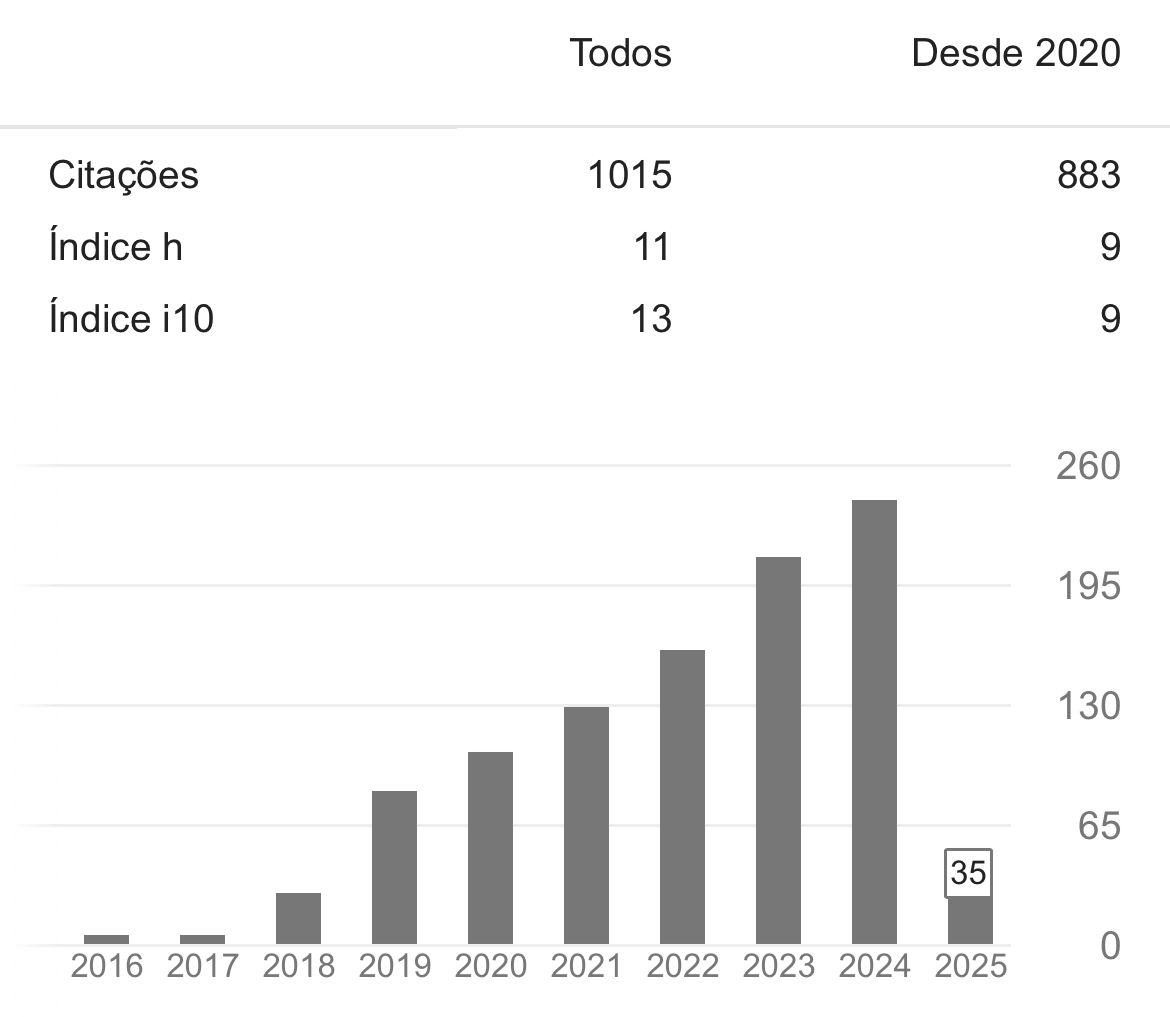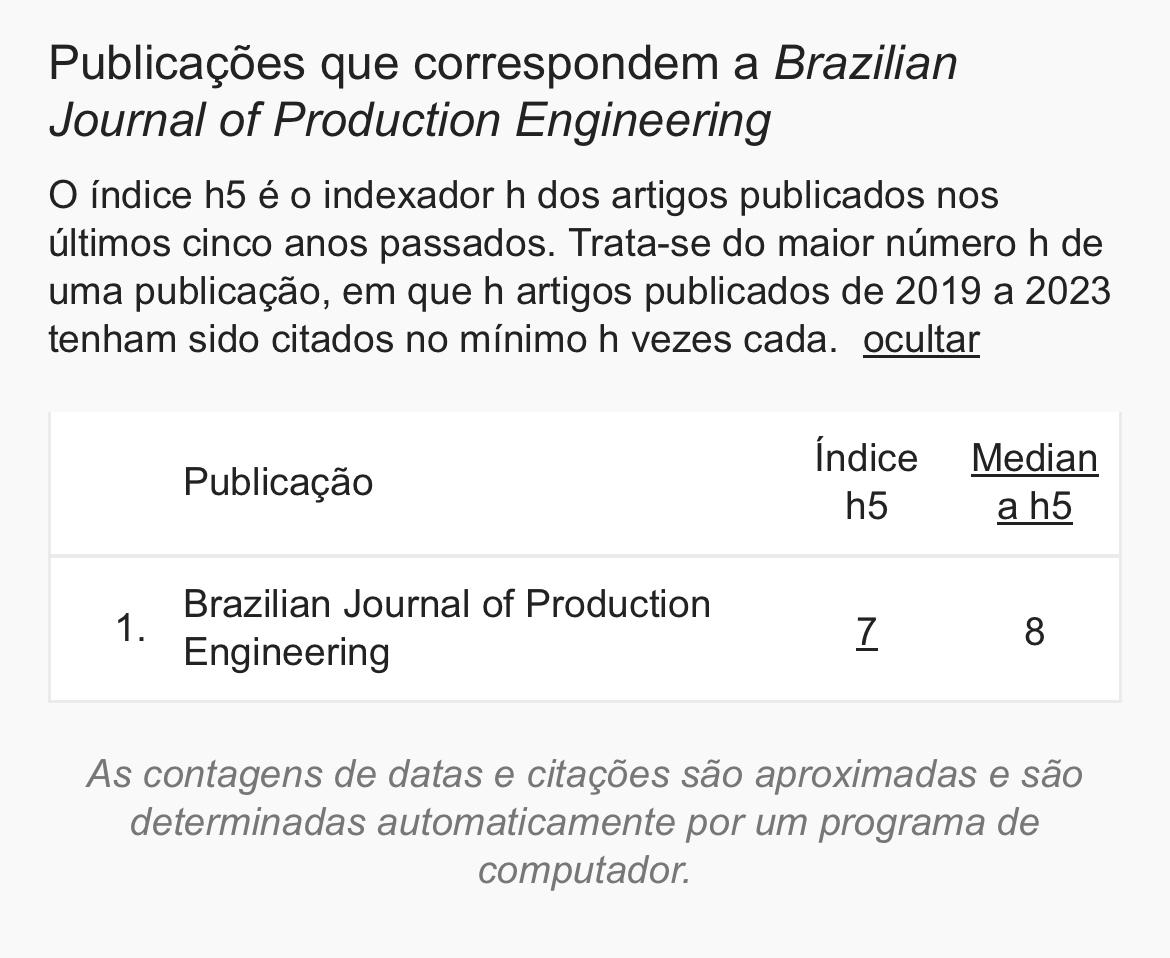Analysis of the application of the AHP method in indicators of potential in the implementation of wind farms
DOI:
https://doi.org/10.47456/bjpe.v7i1.33518Keywords:
AHPt; Wind Energy; Operations Research.Abstract
When considering the current world energy scenario, a wind source is one of the great promises for the future. Therefore, further studies on wind projects and their particularities are justified, as it is a renewable source and has the least impact on the environment. This study has as its theme about the indicators that influence the installation of a wind farm, through peer comparisons, according to the multicriteria decision-making method. To do this, use the Analytic Hierarchy Process Method to rank the criteria and indicators that influence such implementation. The AHP uses mathematics to process as preferential, or decision-making groups, being the facilitating method in solving problems through an algorithm. The results indicated the indicator that occupied the first place in the ranking of decision making, which was the environmental one, which in turn had composed of criteria with greater weights in the criteria according to the test performed by the matrix of judgments. In particular, the wind criterion, which stands out in the opinion of the researchers, as being the one that exerts the greatest influence when considering wind farm implantation.
Downloads
References
Abeeólica - Associação Brasileira de Energia Eólica. (2020). Eólica: energia para um futuro inovador.
Amponsah, N., Troldborg, M., Kington, B., Aalders, I., & Hough, R. L. (2014). Greenhouse gas emissions from renewable energy sources: A review of life cycle considerations. Renewable and Sustainable Energy Reviews, 39, 461-475.
Azevedo, J. P. M., Nascimento, R. S., & Schram, I. B. (2016). Energia eólica e impactos ambientais: um estudo de revisão. XX Encontro Latino Americano de Iniciação Científica, XVI Encontro Latino Americano de Pós-Graduação e VI Encontro de Iniciação à Docência – Universidade do Vale do Paraíba.
Barbosa Filho, W. P., & Azevedo, A. C. S. (2014). O uso da análise hierárquica como auxílio na tomada de decisão de políticas públicas em energia eólica considerando aspectos de sustentabilidade. In: Congresso De Energia Solar, 5., 2014, Recife. Trabalhos… Recife: ABENS.
Barros, B. Z. (2020). Conheça os fatores que influenciam na produção de energia eólica. Engenharia 360.
Bechert, D., Santos, K. C., Neumann, P. N., & Edler, M. A. R. (2015). Eletricidade e meio ambiente: uma nova forma de pensar. REVINT, Cruz Alta, 3(1), 245-257.
Berzins, L. J. (2009). Avaliação de Desempenho pelo AHP, através do superdecisions; Caso Inmetro. Dissertação (Mestrado Profissionalizante) Programa de Pós-Graduação em Administração das Faculdades Ibmec.
Brasil. (1988). Constituição da República Federativa do Brasil. Brasília, DF: Senado Federal: Centro Gráfico.
Brasil. (2007). Tribunal de Contas da União. Cartilha de licenciamento ambiental. 2. ed. Brasília:TCU.
Britol, E. B. S., & Magalhães, L. L. (2017). Marketing de relacionamento e sua influência no processo de captação e retenção de clientes na Tallis Joias e Óticas. Revista de Administração da UNI7, 1, 151–183.
Chaer, G., Diniz, R. R. P., & Ribeiro, E. A. (2011). A técnica do questionário na pesquisa educacional. Revista Evidência, 7(7), 251–266.
Colin, E. C. (2007). Pesquisa Operacional – 170 Aplicações em estratégia, finanças, logística, produção, marketing e vendas. São Paulo: Atlas.
Fadigas, E. A. F. A. (2011). Energia eólica - Série sustentabilidade. Rio Grande do Sul: Editora Antus.
Gazzaneo, B. P. B. (2008). Pré-seleção de ações para a Construção de Carteiras eficientes. Dissertação (Mestrado Profissionalizante em Administração), Faculdade IBMEC.
Gebraad, P. M. O., Teeuwisse, F. W., Van Wingerden, J. W., Fleming, P. A., Ruben, S. D., Marden, J. R., & Pao, L. Y. (2016). Wind plant power optimization through yaw control using a parametric model for wake effects-a CFD simulation study. Wind Energy, 19(1), 95-114.
Goldemberg, J., & Lucon, O. (2008). Energia, meio ambiente e desenvolvimento. 3. ed. São Paulo: EDUSP.
Gomes, L. E. B., & Henkes, J. A. (2015). Análise da energia eólica no cenário elétrico: aspectos gerais e indicadores de viabilidade econômica. R. Gest. Sust. Ambient., Florianópolis, 3(2), 463-482.
Gomes, V. A. P., & Freitas, R. R. (2019). Wind Farm Implementation Factors: A Bibliometric Analysis. International Journal of Advanced Engineering Research and Science, 6(8).
Gomes, V. A. P., Julio, T. S., & Freitas, R. R. (2016). IPSPA: Construção de um Índice de Potencialidade Socioeconômico, Produtivo e Ambiental Pesqueiro utilizando o Método AHP. Brazilian Journal of Production Engineering, 2(1), 72–83.
Hinrichs, A. R., & Kleinbach, M. (2003). Energia e meio ambiente. Trad. De Flávio Maron Vichi e Leonardo Freire Mello. 3. ed. São Paulo: Pioneira Thomson Learning.
Loureiro, C. V., Gorayeb, A., & Brannstrom, C. (2015). Implantação deenergia eólica e estimativa das perdasambientais em um setor do litoral oeste do Ceará, Brasil¹. Geosaberes, 6(especial (1)), 24 – 38.
MME – Ministério de Minas e Energia. (2007). Plano Nacional de Eficiência Energética: premissas e diretrizes básicas.
MURIUCI, S., FERRI, M. S., & FELICETTI, V. L. (2012). Uma sombra na Educação Brasileira: do ensino regular ao paralelo. 2012, [S.l.]: IX ANPED SUL - Seminário de Pesquisa em Educação da Região Sul,1–20.
Nascimento, T. C., Mendonça, A. T. B. B., & Cunha, S. K. (2012). Inovação e sustentabilidade na produção de energia: o caso do sistema setorial de energia eólica no Brasil. Cad. EBAPE.BR, 10(3), 630-651, Sept.
Pereira Neto, A. (2013). A tutela jurídica da energia eólica no Brasil. 2013. 132 f. Dissertação (Mestrado em Direito) – Escola Superior Dom Helder Câmara, Belo Horizonte.
Pinto, A. C., & Santo Neto, P. J. S. (2012). Uma Revisão do Estado da Arte sobre a Aplicação de Aerogeradores de Pequeno Porte no Contexto das Redes Inteligentes. Revista Ciências Exatas e Naturais, 14(1), Jan/Jun.
Pinto, L. I. C., Martins, F. R., & Pereira, E. B. (2017). O mercado brasileiro da energia eólica, impactos sociais e ambientais. Revista Ambiente & Água, 12(6), 1082-1100.
Ruy, M., & De Paula, V. M. F. (2012). Ferramenta Computacional de Apoio ao Ensino do Método de Análise Hierárquica em Cursos de Graduação em Engenharia de Produção. In: XXXII Encontro Nacional de Engenharia de Produção, 2012, Bento Gonçalves - RS. Anais... Bento Gonçalves: ABEPRO.
Saaty, T. L. & Vargas, L. G. (1979). Estimating technological coefficients by the analytic hierarchy process. Socio-Economic Planning Sciences, 13(6), 333–336.
Saaty, T. L. (1980). The Analytic Hierarchy Process and Health Care Problems. New York: McGraw-Hill.
Saaty, T. L. (1988). The analytic hierarchy process. New York, NY: Pergamon Press.
Saaty, T. L. (1990). How to make a decision: The analytic hierarchy process. European Journal of Operational Research, Amsterdam, 48, 9-26.
Saaty, T. L. (1991). Método de Análise Hierárquica. McGraw-Hill, Makron Books, São Paulo, SP, Brasil. 367p.
Saaty, T. L. (2000). Decision making for leaders. Pittsburg, USA: WS. Publications.
Saaty, T. L. (2001). Decision Making with Dependence and Feedback: the Analytic Network Process, 2nd edition, Pittsburgh (USA): RWS.
Silveira, L. D. M. (2017). A produção de energia eólica e seu potencial para desenvolvimento sustentável. XXXVII Encontro Nacional de Engenheria de Produção, Joinville.
Simas, M., & Pacca, S. (2013). Energia eólica, geração de empregos e desenvolvimento sustentável. Estudos Avançados, 27(77), 99-115.
Sovacool, B. K. (2013). The avian benefits of wind energy: A 2009 update. Renewable Energy, 49, 19-24.
Tegou, L. I., Polatidis, H., & Haralambopoulos, D. A. (2010). Environmental management framework for wind farm siting: Methodology and case study. Journal Of Environmental Management, 91(11), 2134-2147.
Wu, Y. N., Zhang, J. Y., Yuan, J. P., Geng, S., & Zhang, H. B. (2016). Study of decision framework of offshore wind power station site selection based on ELECTRE-III under intuitionistic fuzzy environment: A case of China. Energy Conversion and Management, 113, 66-81.
Downloads
Published
How to Cite
Issue
Section
License
Copyright (c) 2021 Brazilian Journal of Production Engineering - BJPE

This work is licensed under a Creative Commons Attribution-NonCommercial-ShareAlike 4.0 International License.

















































































